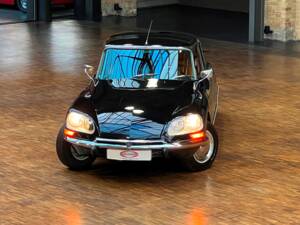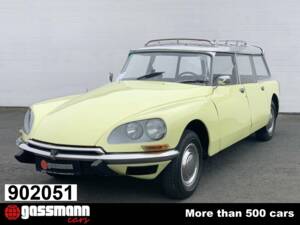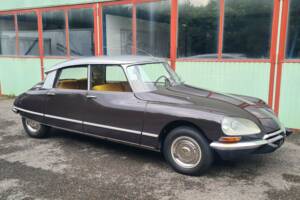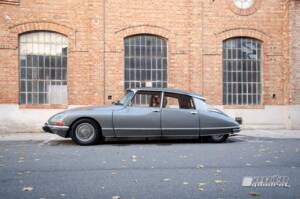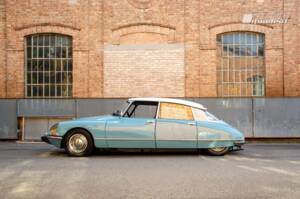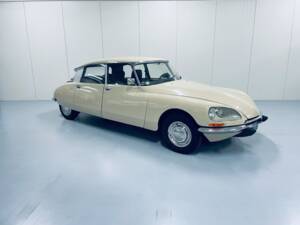Citroën DS classic cars for sale
The Citroën DS, introduced in 1955, redefined automotive technology with its hydro-pneumatic suspension, futuristic design by Flaminio Bertoni, and a wide range of body styles. Its innovations in comfort and engineering stood alone in its era. Explore available Citroën DS models, including luxury Pallas and rare Cabriolets.
Search results

1974 | Citroën DS 23 Pallas
Deesse Ideal
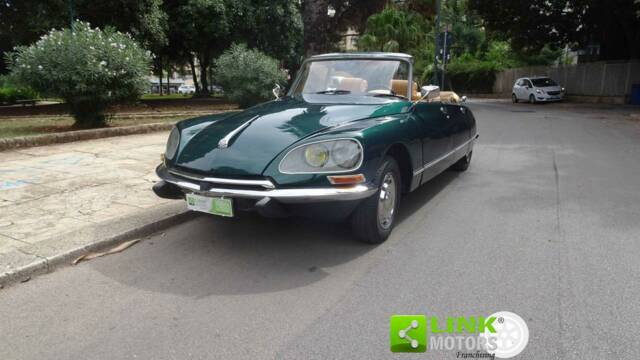

1972 | Citroën DS 23 Pallas IE
Citroën DS 23 Pallas "Original paint - 56.000 kms" In exceptional state of preservation, First paint "Noir" with "Rouge Cornaline Jersey" Velour interior, Well-documented history, "Qu'est-ce qui fait qu'une DS est une DS?", This "DS23 Pallas" has been used as an example “high level of originality” by well-known Citro-specialists, 56000 kilometers driven since '72

1972 | Citroën DS 20 Familiale
20 DS ID Break Familiale - mehrfach verfügbar!
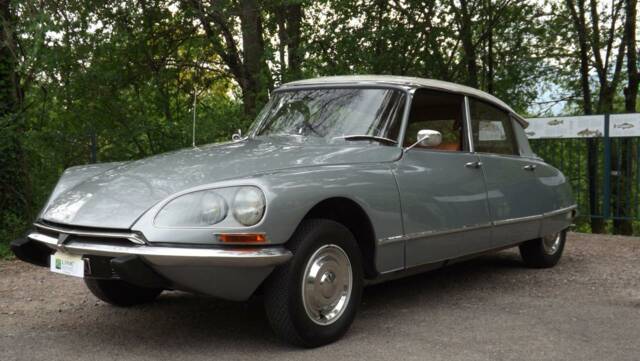
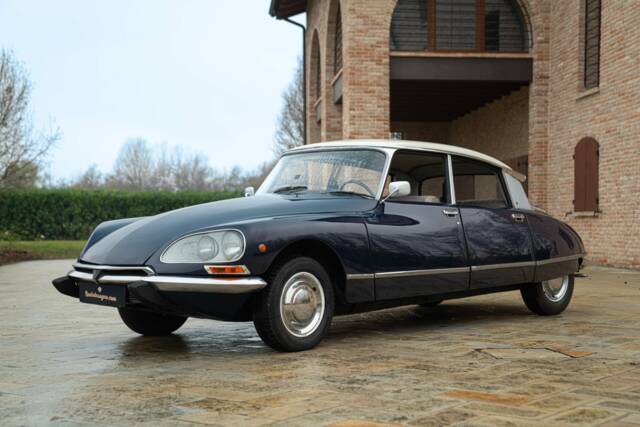
1972 | Citroën DS 20
2025-05-31 16:59:36 | Citroen DS 20
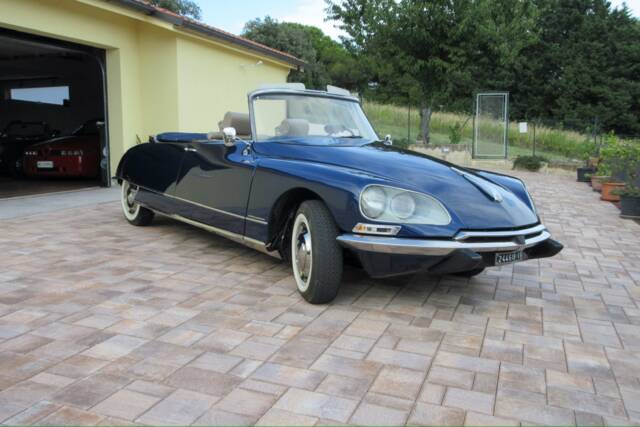
1970 | Citroën DS 21 Chapron
Replica
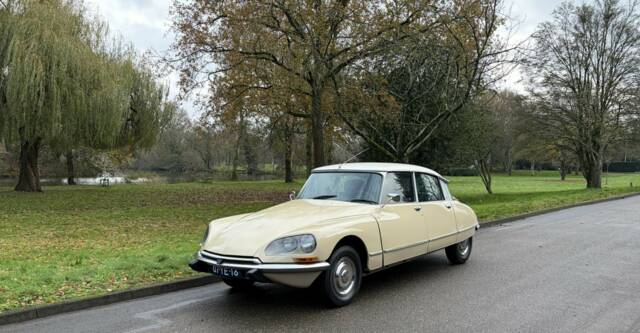
1973 | Citroën DS 23 Pallas
DS 21 Pallas 5 speed. PRICE REDUCTION.

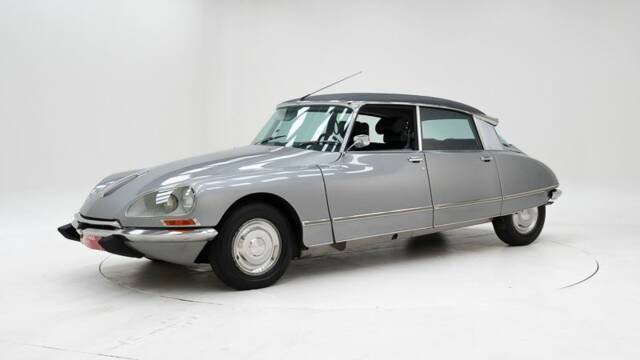
1973 | Citroën DS 23 Pallas IE
1973 Citroen DS 23 IE semi Pallas '73

1974 | Citroën DS 23 Pallas IE
österr. Erstauslieferung - Restauriert

1971 | Citroën DS 21
Bleu Camargue

1973 | Citroën DS 20
Citroën DS 20 semiautomatic / LPG
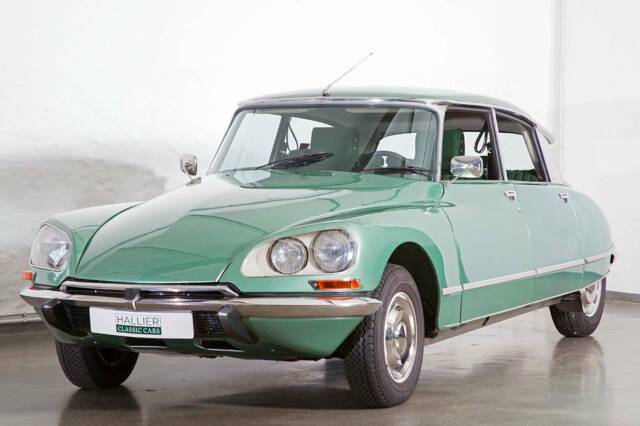
1974 | Citroën DS 23 Pallas
Citroen DS
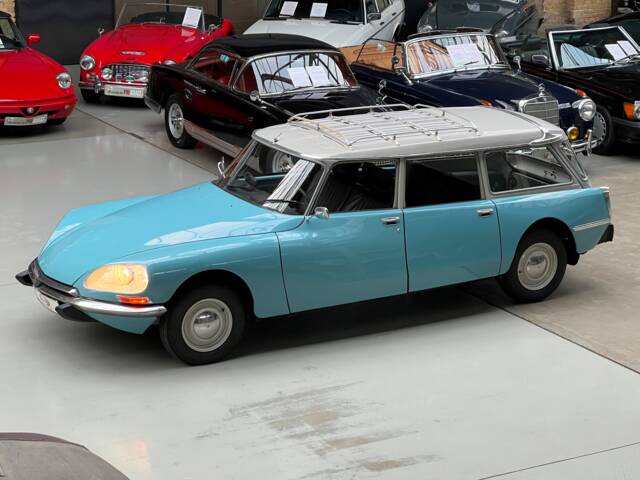
1973 | Citroën DS 20 Commerciale
Commerciale Practique
History of the Citroën DS
Unveiled at the Paris Motor Show in October 1955 as the successor to the Traction Avant, the Citroën DS immediately stirred interest—over 12,000 orders were made on the first day. Designed by Flaminio Bertoni, its aerodynamic shape and innovative engineering positioned it as a symbol of French advancements in automotive construction. The DS name reflects its French pronunciation ('Déesse', meaning 'goddess'), and its technical breakthroughs quickly made headlines. Production continued until 1975, when it was succeeded by the Citroën CX. Over its 20-year production, the DS was offered as a saloon, Break (estate), Familiale (seven or eight seats), Cabriolet (by Henri Chapron), ambulances, and commercial versions. The vehicle was widely exported and became an integral part of French and European motoring culture.
Model Series Evolution
The DS spanned three distinct model evolutions within its single-generation run. Early models were equipped with a 1.9-litre four-cylinder engine generating 75 hp and reached speeds of up to 140 km/h. Over time, engine options expanded up to 2.3 litres, culminating in the high-performance DS 23 Injection Electronique with 2,347 cm³ and up to 141 hp. The model range included the simplified ID variant, DSuper entry versions, DSpecial, and DSuper 5 with a five-speed gearbox. The 1967 facelift introduced the 'third nose' with directional headlamps and enhancements in safety and comfort. The DS platform was also adapted for various use cases – from utilitarian estates (Break/Safari) to high-comfort Familiales to ambulances with special rear seating arrangements. Last produced in 1975, the DS and its derivatives totalled more than 1.3 million units.
Key Features and Technical Innovations
The Citroën DS is renowned for pioneering the hydro-pneumatic suspension system with self-levelling functionality and fully independent wheel suspension—a marked leap in ride comfort and handling. It was the first mass-produced car to use front disc brakes and featured variable ground clearance, inboard brakes for reduced unsprung mass, a single-spoke steering wheel, and a panoramic windscreen. The chassis construction involved a steel body with a fibreglass roof (except estates, which remained steel for roof load). The model set benchmarks in safety, riding comfort, and everyday usability, supported by adjustable and luxurious interiors and advanced equipment for the time, like power windows, air conditioning, and advanced instrument clusters.
Technical Data
Special Editions and Collectible Models
Among the most collectible DS models are the factory Cabriolet Usine (built 1960–1971 by Henri Chapron), known for their exclusive four-seat arrangement and reinforced chassis. High-spec Pallas versions, identified by luxurious trim and superior sound insulation, command a premium, especially with rare equipment options and special colours. DS 23 IE (Injection Electronique) models represent the performance zenith of the range. Familiale variants offered unique seating for up to eight passengers, and Break (Safari/Estate) versions came with distinctive roof rails and rear seat innovations. Rarer DS models with Jaeger dashboards, Gradulux rear blinds, and unique factory colours are particularly sought by collectors.
Engine, Performance, Transmission and Handling
All DS models deliver a unique experience thanks to their front-wheel drive and self-levelling hydro-pneumatic suspension. Early DS 19s feature robust four-cylinder engines with moderate output, while later DS 21 and DS 23 (especially fuel-injected versions) provide improved performance up to 188 km/h. Transmission choices range from four- or five-speed manuals, sophisticated semiautomatic hydraulic units (without clutch pedal), to rare BorgWarner automatics. Inboard disk brakes at the front reduce unsprung weight, and the combination of different front/rear track widths was designed to reduce understeer. Motorsport highlights include victories at Monte Carlo Rally (1959, 1966) and London-Sahara-Munich (1974), underlining the model's endurance credentials. - DS 21 IE: 2.1-litre with fuel injection, noted for reliability and speed.
- DS 23 Pallas IE: 2.3-litre, 141 hp, luxury trim, Bosch D-Jetronic injection.
- DSuper 5: 5-speed gearbox as standard on later, more affordable models.
- Cabriolet Usine: Open-top variant, produced in limited numbers, highly desirable.
- Break (Safari/Estate): Versatile, with extra rear seats and modular cargo space.
Interior and Exterior Design, Comfort, and Special Details
Flaminio Bertoni's styling established the DS as a staple of mid-century automotive design. The body’s flowing lines, integrated chrome details, and innovative use of materials made it instantly recognizable. The panoramic windscreen and single-spoke steering wheel were signatures, as were the optional Jaeger instrument clusters and Gradulux rear window blinds. Pallas luxury versions boasted leather or velours upholstery, chromed details, and superior sound deadening. Original DS models were offered in unique Citroën palette colours such as 'Bleu d’Orient,' 'Gris Palladium,' and 'Sable Métallisé.' Distinctive accessories included headlight washers, electric windows, air conditioning (rare), and adjustable steering—a rarity for the period. Cabriolet models required additional chassis reinforcement, and estate versions featured steel roofs and modular rear bench arrangements.
Further Notable Features
Hydropneumatic suspension is often associated solely with comfort, but it also enabled unique practicalities: roadside tyre changes without a jack and automatic self-leveling under load. Models exported globally often sported adaptations for local regulations (headlight conversion, bumper styles). Michelin's radial tyres were standard from the start, enhancing grip and longevity. Power steering, advanced for its time, was fitted universally after early production. Several DS versions were used by the French government, most famously as presidential cars. Rare factory equipment includes rear heater vents, extra power sockets, and heated rear windows.
Summary
The Citroën DS remains a symbol of technical progress and daring design. Market statistics show enduring demand, with DS DX models comprising over 30% of supply and demand shares. Whether as a saloon, estate, luxury Pallas, or open Cabriolet, the DS covers a diverse spectrum of classic motoring tastes. Its influence is reflected in rally wins, presidential use, and television/cultural appearances—securing its place as one of the most distinguished vehicles produced by Citroën.
